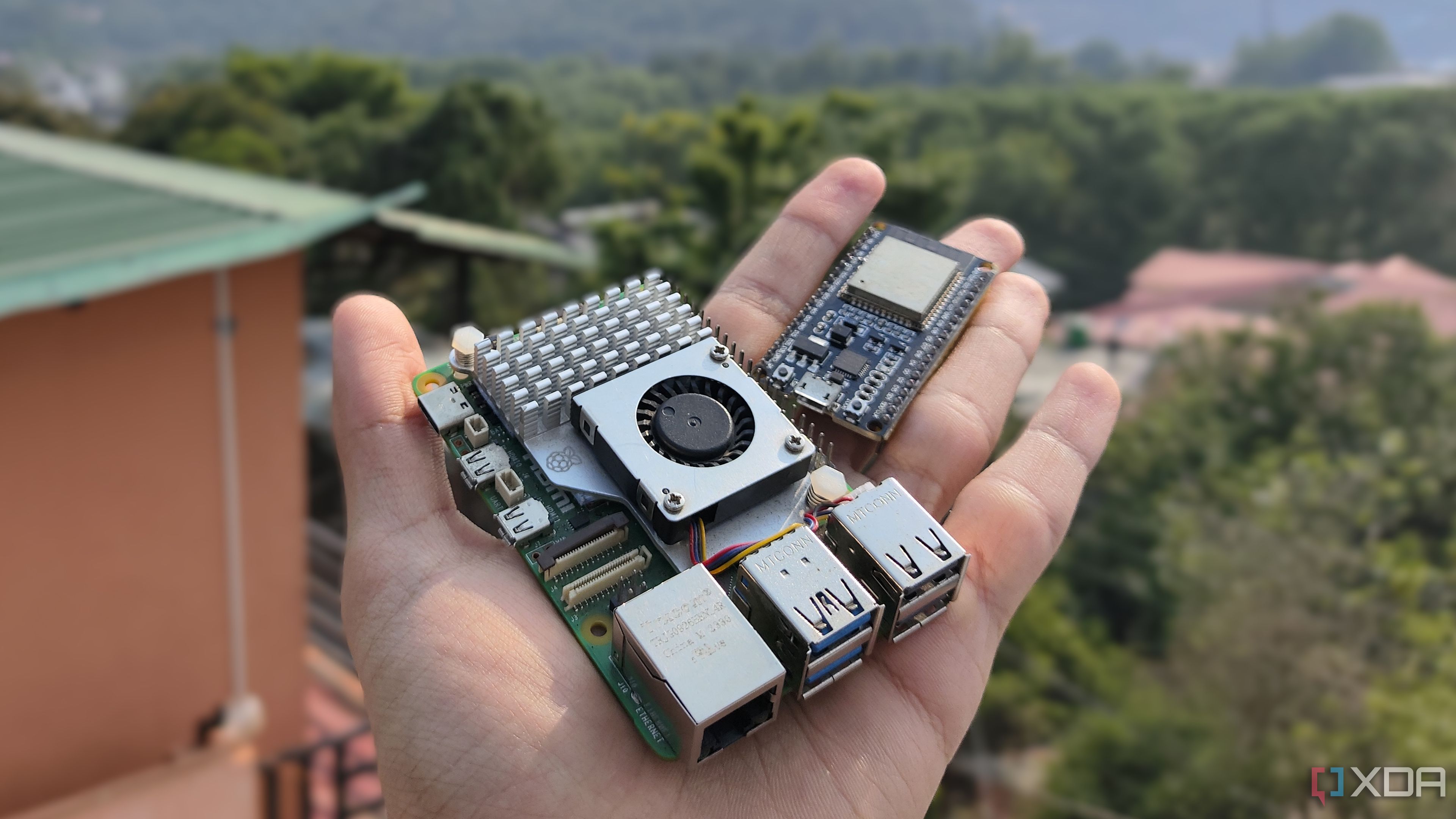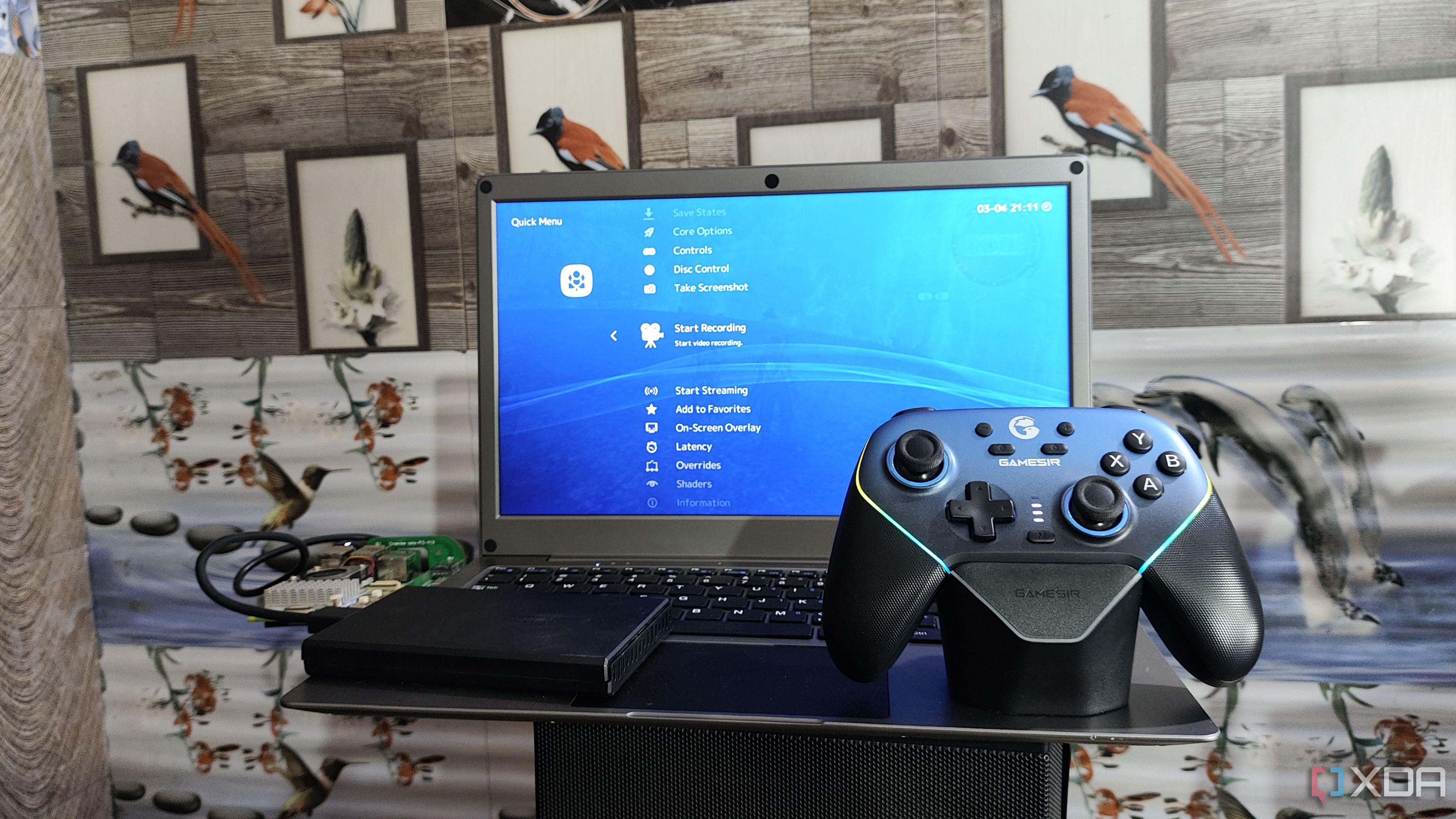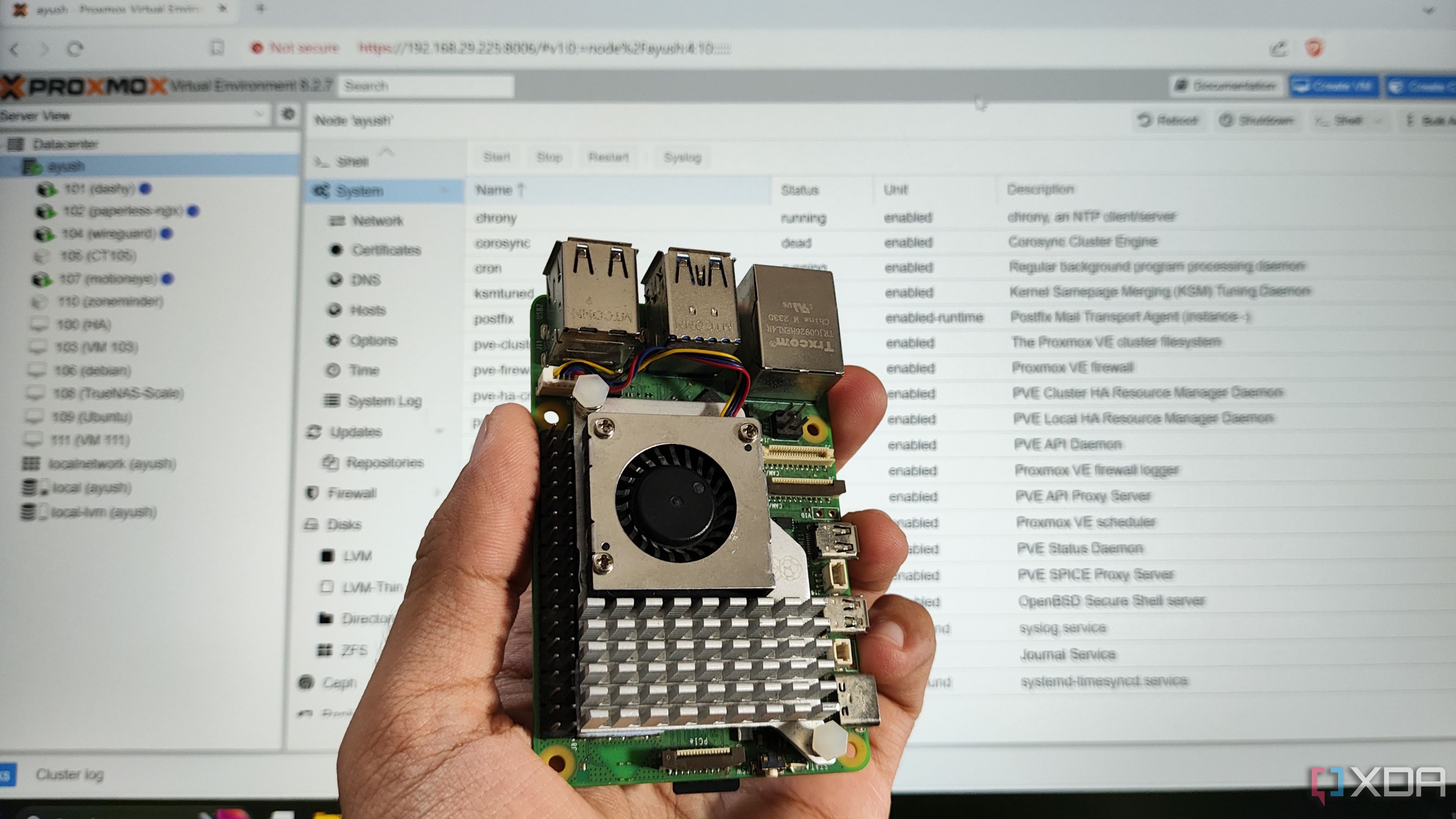Thanks to the tinkering community’s innovative ideas, there’s a lot you can do with a spare Raspberry Pi, including the underpowered Zero lineup. You’ve got lightweight LAMP servers for web developers, Pi-hole containers for folks who despise ads as much as I do, and Pi.Alert for security-conscious users who need a lightweight network monitoring utility.
That said, the Raspberry Pi Zero series’ cost-effective nature requires huge sacrifices on the performance front. As someone who uses different Raspberry Pi SBCs, let me tell you, the Raspberry Pi 5 is miles ahead of the Zero lineup when it comes to sheer processing prowess. So much, in fact, that I’d rather build many of my favorite projects on a Raspberry Pi 5 instead of relying on its budget-friendly Zero siblings.
Budget-friendly NAS
Where are you gonna plug the drives, anyway?
Despite my grievances with using a Raspberry Pi 5 as a dedicated Network-Attached Storage solution, the SBC works pretty well as a file-sharing server. Installing OpenMediaVault on the latest and greatest Raspberry Pi does require a little bit of elbow-grease, but the SBC works pretty well for sharing files and can even double as a secondary data archival server (as in, a backup machine for your primary NAS).
In contrast, the Raspberry Pi Zero series doesn’t work all that well with OpenMediaVault, and I distinctly recall giving up on this project when I bought my first RPi Zero W eons ago. You could technically mount some drives (or rather, USB sticks instead of multiple HDDs) to the micro-USB ports via USB hubs and configure SMB/NFS shares on the Raspberry Pi OS, but the transfer speeds are so low that it’s not worth all the extra legwork.
Home Assistant hub
Good luck controlling multiple smart devices on the RPi Zero

Home Assistant is my favorite utility for managing the plethora of smart gadgets and IoT products scattered around my house, and it pairs well with Raspberry Pi SBCs. In fact, I used to run a dedicated HASS server on my Raspberry Pi 5 before migrating it to my Proxmox-based Xeon workstation. While the microSD card’s terrible endurance was a bit of an issue, the RPi-based smart home hub was surprisingly reliable once I started running it on an SSD, and I had no issue controlling (and even automating) as many as two dozen smart devices with the SBC.
Unfortunately, I can’t say the same about Raspberry Pi Zero boards. Sure, a Home Assistant Core running on a lightweight CLI distro can help you get accustomed to the smart home management platform, but the Zero lineup’s underpowered nature can result in major slowdowns once you start pairing it with multiple devices.
Surveillance system
Frigate pairs well with the official AI Kit
If you’ve got the Raspberry Pi camera kit, a security camera powered by a Zero board serves as a great beginner project. However, the low streaming resolution and the lack of proper AI detection provisions make this project pretty much useless for experienced tinkerers, and the performance issues become even more noticeable once you bring multiple IP cameras into the equation.
In contrast, the Raspberry Pi 5 can pull its own weight as the control center of a surveillance camera setup. Frigate works surprisingly well with the newest Raspberry Pi SBC, and before arming my NAS with some extra hard drives, I’d relied on my RPi 5 as a lightweight security camera hub for months. With Frigate adding support for the Raspberry Pi AI Kit earlier this month, the SBC becomes even more useful for this setup, as you can leverage the AI HAT’s superior detection and tracking features in your surveillance system.
Emulation box
Not to be confused with a retro gaming machine

A Raspberry Pi Zero (and especially 2W) works really well as an NES/SNES/Game Boy emulator, and with a little bit of 3D printing and electrical wiring, you can even turn it into a portable retro gaming system. But if you’re as deep into the emulation rabbit hole as I am, you’ll know that the Zero series lacks the sheer processing capabilities to run (pardon the oxymoron) newer ancient consoles.
Meanwhile, the Raspberry Pi 5 can handle up to PlayStation 1 and Wii games without buckling under the extra load. Heck, if you’re willing to subject yourself to the pain of setting up the AetherSX2 core on RetroPie, you can even run some light PlayStation 2 titles (with some tweaks, of course) on the RPi 5.
General-purpose system
It’s a surprisingly decent use case for the RPi 5
Although the Raspberry Pi Zero eased me into terminal commands and is low-key the reason I became interested in the world of Linux distros, I wouldn’t recommend using the SBC as a daily driver. Sure, the 2W (and even the OG Zero model) are great for coding projects and can even run a GUI distribution or two, but they are not suited for multi-tasking workloads.
Meanwhile, the Raspberry Pi 5 is a lot better than its budget-friendly sibling for everyday tasks, and can run most of the popular Linux distros and desktop environments without breaking a sweat. However, its real potential emerges once you pair it with a lightweight and feature-heavy OS like FydeOS. Not only does the distribution turn the Raspberry Pi into a neat Chromebook, but you can even combine it with a portable screen and keyboard combo (or something like the CrowView Note 14) to use the Raspberry Pi 5 as a regular, general-purpose laptop.
Still, even a Raspberry Pi 5 becomes inadequate for certain projects

Although I adore my Raspberry Pi 5 to bits, I’ve started to run into projects where other SBCs – especially those belonging to the x86 faction – provide better results. A DIY media server is one such project, as the Raspberry Pi 5’s lack of hardware transcoding provisions makes it a poor choice for streaming videos above 1080p. Likewise, you could technically set up Proxmox on the SBC, but even a budget-friendly x86 mini-PC in the sub $150 range can outperform the Raspberry Pi 5 at server workloads.
.png)











 English (US) ·
English (US) ·